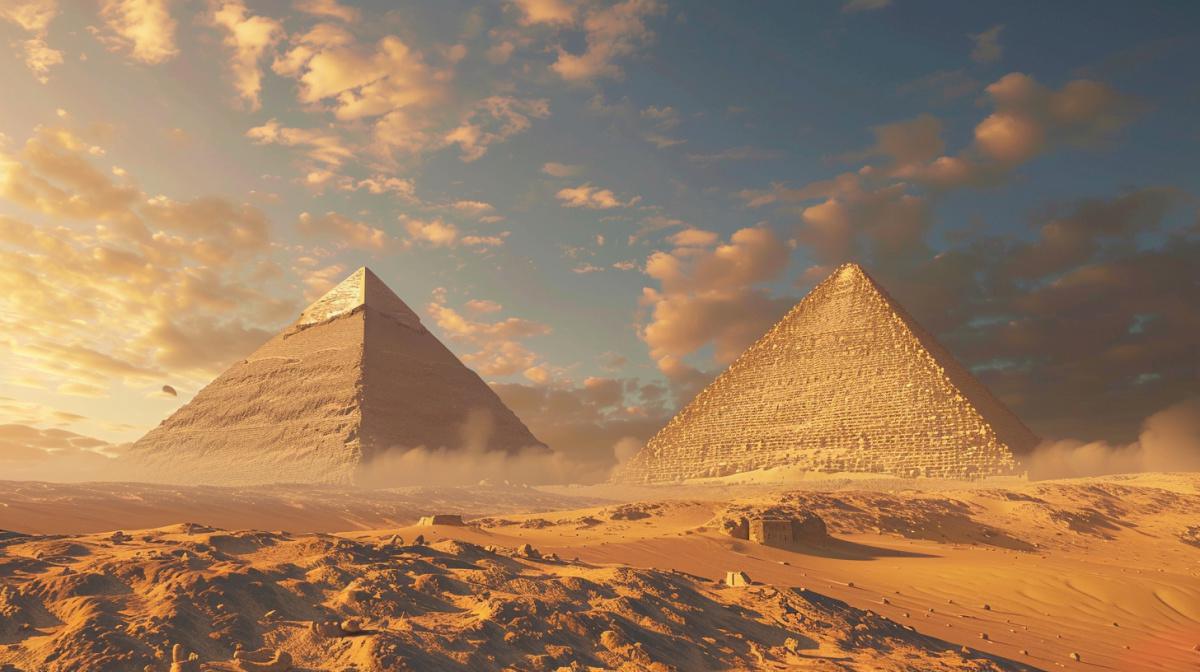The Giza and Nubian pyramids stand as testaments to ancient ingenuity, captivating not just with their grandeur but also their profound energetic and meditative qualities. These structures, while similar in shape, are distinguished by their unique attributes that cater to various wellness facets.
Giza Pyramids: A Source of Healing and Stability
Rooted in the design of the iconic Great Pyramid of Giza, these pyramids are deeply connected to the heart chakra, positioning them as central healers within the energetic field. This connection fosters a deep sense of grounding, making the Giza pyramids particularly valuable for those navigating challenges in self-growth, emotional equilibrium, and spiritual anchoring. The strategic placement of chakra-corresponding gemstones either within or on these pyramids can amplify their healing potential, offering a comprehensive tool for those pursuing a well-rounded path to wellness.
Nubian Pyramids: Catalysts for Empowerment and Clarity
Drawing inspiration from the sharper, more compact structures of Meroë, the Nubian pyramids align more closely with the throat chakra, emphasizing the themes of empowerment and clear direction. This makes them especially suited for individuals tackling issues around self-expression, decision-making, and aligning their life’s journey with their ultimate purpose. Incorporating specific gemstones related to various chakras can further refine the pyramid's focus, providing targeted energetic support.
Making the Right Choice: Energy and Intention
The decision between a Giza or Nubian pyramid hinges on the specific type of energy and healing one seeks. Those in pursuit of a grounding, holistic healing experience may gravitate towards the Giza pyramid due to its comprehensive healing capabilities. Conversely, those aiming to bolster their personal power and clarity may find the Nubian pyramid more in tune with their needs.
Practical Considerations: Space and Usage
Beyond the energetic distinctions, practical matters like space availability, intended usage, and preferred activities within or around the pyramid are crucial in selecting the most suitable structure. The desired interaction with the pyramid—be it sitting, standing, or lying down—can guide the choice of pyramid size and type.
Understanding Historical Nuances
Addressing historical misconceptions is vital; while the Nubian pyramids drew inspiration from their Egyptian counterparts, they are not mere replicas. The Nubian culture developed its distinct architectural style later, characterized by sharper slopes and more compact forms. The cultural and architectural exchange between Egypt and Nubia was rich and reciprocal, highlighting a complex historical relationship rather than a simple dynamic of influence.
Conclusion: A Journey to Well-Being
Choosing between Giza and Nubian pyramids for energy work, meditation, or healing involves a careful consideration of each pyramid's unique energies, their chakra connections, and practical usage aspects. Whether one seeks grounding and healing or empowerment and clarity, these ancient edifices offer distinct pathways to enrich the spiritual and physical aspects of life.

